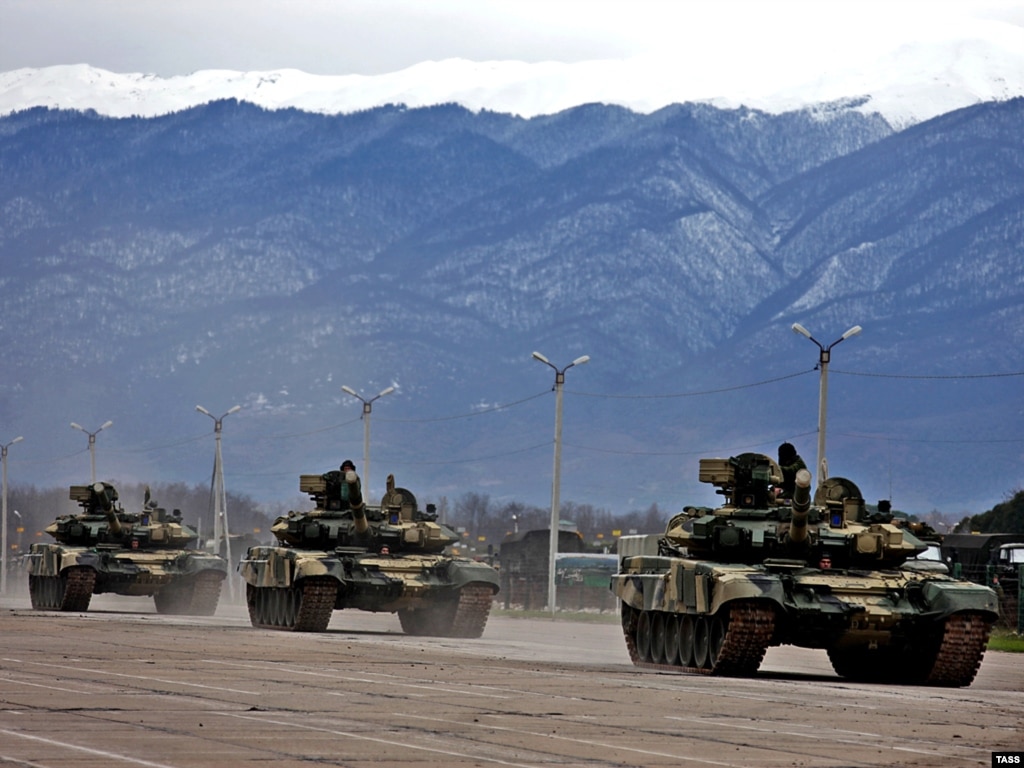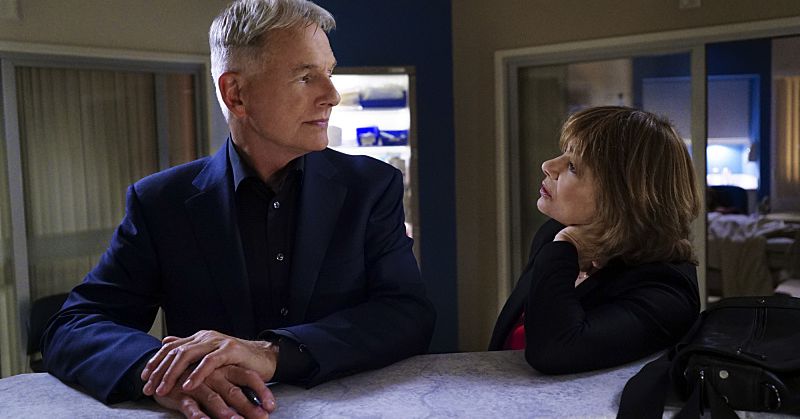Recent Russian Military Developments And European Security

Table of Contents
The escalating tensions in Eastern Europe have fueled significant concerns about Russia's military build-up and its potential implications for regional and European security. Recent Russian military developments have dramatically altered the geopolitical landscape, demanding careful analysis and proactive responses from the international community. This article examines recent Russian military advancements and their impact on European security, exploring modernization efforts, strategic deployments, and the resulting challenges.
Modernization of the Russian Armed Forces
Russia's military modernization program represents a significant challenge to European security. This program involves substantial investment in new weapons systems and technological advancements, enhancing its overall military capabilities.
Investment in New Weapons Systems
Russia has significantly increased its defense spending, allocating a considerable percentage of its GDP to the procurement of advanced weaponry. This investment focuses on several key areas:
- Hypersonic Missiles: The development and deployment of hypersonic missiles like the Avangard and Zircon pose a significant challenge to existing missile defense systems, potentially undermining NATO's deterrence capabilities. These missiles are characterized by their extreme speed and maneuverability, making them difficult to intercept.
- Nuclear Capabilities: Russia continues to modernize its nuclear arsenal, including its strategic nuclear forces and tactical nuclear weapons. This modernization includes upgrades to existing systems and the development of new delivery systems.
- Modernized Tanks: The T-14 Armata, a next-generation main battle tank, represents a significant technological leap for the Russian military, enhancing its ground combat capabilities.
The impact of Western sanctions on Russia's procurement efforts remains a subject of ongoing debate. While sanctions have undoubtedly created hurdles, Russia has demonstrated a capacity to adapt and pursue alternative procurement strategies. The exact impact on the pace of modernization remains to be fully assessed. Defense spending as a percentage of GDP consistently ranks high compared to many Western nations.
Technological Advancements
Beyond hardware, Russia is investing heavily in technological advancements that enhance its military's effectiveness across multiple domains:
- Cyber Warfare: Russia's sophisticated cyber capabilities pose a substantial threat to critical infrastructure and national security across Europe. Successful attacks on various institutions demonstrate their proficiency in this area.
- Electronic Warfare: Russia is developing and deploying advanced electronic warfare systems designed to disrupt enemy communication and sensor systems, significantly impacting battlefield awareness.
- Artificial Intelligence (AI): Russia is integrating AI into its military systems, aiming to improve decision-making, enhance situational awareness, and automate certain aspects of warfare. The extent of their AI integration and its effectiveness remain subjects of ongoing analysis.
- Private Military Companies (PMCs): The role of PMCs like the Wagner Group in supporting Russian military operations raises concerns about accountability and the potential for destabilization. Their involvement in technological advancements, such as the use of drones, is also noteworthy.
Strategic Deployments and Military Exercises
The increased military presence near NATO borders and the scale of Russian military exercises are key indicators of shifting geopolitical realities and contribute significantly to the concerns about European security.
Increased Military Presence in Eastern Europe
Russia has significantly increased its military presence in regions bordering NATO members and neighboring countries. This includes:
- Deployment of troops and equipment: A substantial build-up of troops, tanks, and other military hardware has been observed in areas such as Belarus, Ukraine, and the Kaliningrad Oblast.
- Establishment of new military bases: Russia has established or expanded existing military bases near NATO borders, further enhancing its military reach.
- Increased military flights: The frequency of Russian military aircraft flights near NATO airspace has increased, raising concerns about potential incursions. This includes both fighter jets and bombers.
These military movements often coincide with periods of heightened political tension, adding to the instability in the region and requiring a vigilant response from NATO and its allies.
Large-Scale Military Exercises
Russia conducts large-scale military exercises regularly, often involving significant numbers of troops and advanced weaponry:
- Zapad exercises: These exercises, which involve troops from Russia and Belarus, simulate large-scale combat scenarios, testing Russia's readiness and capabilities.
- Geographical location: The location of these exercises, frequently near NATO borders, is viewed as a demonstration of power and a potential threat.
- Strategic messaging: These exercises send a clear strategic message regarding Russia's military capabilities and its readiness to respond to perceived threats.
These maneuvers are often met with strong responses from NATO and European countries, leading to increased military activity and heightened tensions.
Impact on European Security and Response Measures
The implications of recent Russian military developments are profound and require a comprehensive response from the European community.
NATO's Response to Russian Military Developments
NATO has adopted a multi-faceted approach to counter the challenges posed by Russia's military actions:
- Increased military presence in Eastern Europe: NATO has increased its military presence in Eastern Europe, deploying troops and equipment to reassure allies and deter potential aggression.
- Deterrence strategy: NATO's core strategy continues to focus on deterrence, aiming to dissuade Russia from any aggressive action through a strong military presence and credible threat response.
- International cooperation: NATO works closely with its partners and allies to coordinate responses to Russian military actions, sharing intelligence and bolstering collective defense capabilities.
European Union's Security Policies
The European Union has also been actively involved in responding to the challenges posed by Russia:
- Strengthening of the EU's defense capabilities: The EU is investing in strengthening its collective defense capabilities, including improving military interoperability and enhancing cyber security.
- Coordination between the EU and NATO: The EU and NATO work to coordinate their efforts to address the security challenges posed by Russia, avoiding duplication and maximizing effectiveness.
- Sanctions and diplomatic efforts: The EU has imposed various sanctions against Russia and engages in diplomatic efforts to de-escalate tensions and find peaceful resolutions.
Projections and Future Scenarios
Predicting the future trajectory of Russian military development and its implications for European security is challenging, but several key trends warrant attention.
Potential Future Threats and Challenges
- Further military modernization: Russia is expected to continue modernizing its military, potentially developing even more advanced weaponry and enhancing its cyber warfare capabilities.
- Increased assertiveness: Russia might adopt an increasingly assertive approach in its foreign policy, potentially seeking to expand its influence in neighboring regions.
- Hybrid warfare: Russia may continue to employ hybrid warfare tactics, combining military force with other instruments of power like disinformation and cyberattacks.
These potential future threats require ongoing vigilance, proactive planning, and robust responses from European nations and international organizations.
Analysis of future military spending and technological advancements in Russia
Future Russian military spending and technological advancements will likely continue to be influenced by geopolitical considerations, economic factors, and the availability of resources and technological advancements. Ongoing sanctions and global economic conditions will likely affect the long-term planning for these critical areas.
Conclusion
Recent Russian military developments represent a significant challenge to European security. The modernization of its armed forces, strategic deployments near NATO borders, and the scale of its military exercises all contribute to the heightened tensions in the region. NATO and the European Union are responding to these challenges through increased military presence, enhanced deterrence strategies, and international cooperation. However, the potential for future threats remains a significant concern, demanding ongoing vigilance and adaptive responses. Staying informed about "Recent Russian Military Developments and European Security" is crucial for understanding the evolving geopolitical landscape. Subscribe to our newsletter or follow us on social media for further updates and analysis.

Featured Posts
-
 Vehicle Safety Research Driving Challenges And Strategies For Individuals With Adhd
Apr 29, 2025
Vehicle Safety Research Driving Challenges And Strategies For Individuals With Adhd
Apr 29, 2025 -
 Capital Summertime Ball 2025 Tickets Your Step By Step Guide To Purchase
Apr 29, 2025
Capital Summertime Ball 2025 Tickets Your Step By Step Guide To Purchase
Apr 29, 2025 -
 You Tubes Evolving Audience The Growing Influence Of Older Viewers
Apr 29, 2025
You Tubes Evolving Audience The Growing Influence Of Older Viewers
Apr 29, 2025 -
 Dsv Leoben Praesentiert Neues Trainerteam In Der Regionalliga Mitte
Apr 29, 2025
Dsv Leoben Praesentiert Neues Trainerteam In Der Regionalliga Mitte
Apr 29, 2025 -
 Missing Person British Paralympian Sam Ruddock Last Seen In Las Vegas
Apr 29, 2025
Missing Person British Paralympian Sam Ruddock Last Seen In Las Vegas
Apr 29, 2025
